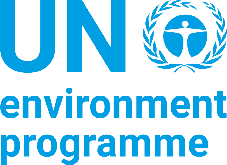London’s Mayor, Sadiq Khan, has put in place policies that have led to big reductions in the city’s dangerously polluted air.
In 2016, London exceeded the hourly legal limit for nitrogen dioxide by over 4,000 hours. Last year, this fell to just over 100 hours – a 97 per cent reduction. Since Mayor Khan took Office in 2016, nitrogen dioxide levels in central London have been five times lower than the national average. London is now setting an example for the rest of the UK to follow.
The policy at the center of this success is the world’s first Ultra Low Emission Zone (ULEZ) which operates in central London 24 hours a day, 7 days a week. Vehicles driving in the ULEZ must meet its strict emissions standards or pay a daily charge. Since its inception, the zone has reduced central London’s roadside nitrogen dioxide by 44 per cent.
The scheme has been extremely effective and compliance rates have risen to 80 per cent, up from 39 per cent in February 2017, when changes associated with the ULEZ began.
The tighter emissions standards have also led to fewer older and more polluting vehicles driving in central London. From February 2017 to January 2020 44,100 fewer polluting vehicles travelled through the zone on an average day. Not only are there fewer older, more polluting vehicles, reduced traffic flows in central London were reduced by 3 – 9 per cent from 2018 to 2020.
Preliminary estimates indicate that by the end of 2019 nitrogen oxide emissions from road transport were reduced by 35 per cent (230 tonnes) and carbon dioxide emissions by 6 per cent (12,300 tonnes) compared to a scenario without a ULEZ.
Significantly, none of the air quality monitoring stations located on ULEZ boundary roads has measured an increase in nitrogen dioxide concentrations since the zone’s introduction. Allaying concerns that the ULEZ would result in an increase of “displaced” more polluting traffic outside the zone.
Other air pollution reduction policies put in place by London include:
- 12 Low Emission Bus Zones -- delivered a year ahead of schedule.
- Investing in Electric buses: the city no longer buys diesel buses and now has an electric bus fleet of almost 300 vehicles – the largest of any city in Western Europe and North America. This has increased investment in factories in Leeds, Falkirk, Scarborough and Ballymena.
- Reducing the age limit for polluting taxis and no longer licensing new diesel taxis. There are now over 3,500 licensed electric taxis and cutting the age of older taxis has put London on track to reduce nitrogen oxide emissions from taxis by 65 per cent by 2025.
- Investing in electric vehicle infrastructure. London now has 5,000 charge points, 25 per cent of the UK’s total, and one for every six electric vehicles registered in London.
- Cleaning up the air around schools and nurseries. The city has audited air quality at 50 primary schools in the city’s most polluted areas and provided funding to help schools address air pollution. This and expanded the approach to 20 nurseries. Five London boroughs have extended the programme to 200 schools.
- Introducing the Mayor’s Air Quality Fund (£22 million): The latest round funded 15 projects including four new Low Emission Neighbourhoods which will deliver a comprehensive package of measures to support walking, cycling, greening, ultra-low emission vehicles and reduced emissions from freight
- Improving air pollution alerts: Action taken in August 2016 ensures the local government transport body, Transport for London, broadcasts air quality advice across London whenever pollution is high or very high.
- Holding air quality summits: London has hosted two National Clean Air Summits and an International Summit, bringing together city leaders, ministers, the World Health Organization, the United Kingdom's National Health Service (NHS) and business executives.
Mayor Sadiq Khan’s Ultra Low Emission Zone and other bold air pollution reduction policies will save the NHS around £5 billion and more than one million hospital admissions over the next 30 years. The Mayor’s actions support the C40 Clean Air Cities Declaration to meet World Health Organization Air Quality Guidelines by 2030.
This story was submitted by the Greater London Authority. Non-UNEP stories highlighted here have been communicated to the United Nations Environment Programme (UNEP) by external partners in support of the International Day of Clean Air for blue skies and are shared here as a courtesy. UNEP is not responsible for the content. Inclusion here is not meant to be construed as an endorsement of the stories or the content therein.
